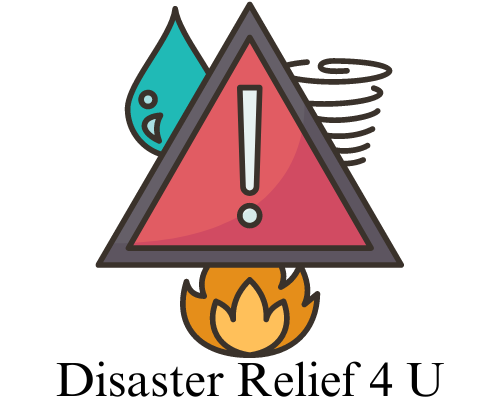How Can Video Analysis of Iceland’s 2010 Eruption Improve Volcanic Ash Forecasts for Aviation Safety?
When it comes to aviation safety, the threat of volcanic ash clouds can pose significant risks to aircraft engines and overall navigational safety. The eruption of Iceland’s Eyjafjallajökull volcano in 2010 had a major impact on global aviation due to the large ash cloud it produced. However, through video analysis of this eruption, researchers have gained valuable insights into the growth and dispersion of volcanic ash clouds. This data has the potential to enhance volcanic ash forecasts, ultimately improving safety measures for air travel.
Understanding the Impact of the 2010 Eyjafjallajökull Eruption
The eruption of Eyjafjallajökull in Iceland in 2010 created a massive ash cloud that disrupted air travel across Europe for several weeks. The volcanic ash poses a serious threat to aircraft engines, as it can cause abrasion and erosion of engine parts, potentially leading to engine failure. In addition, ash particles in the atmosphere can reduce visibility, interfering with navigation systems and creating hazardous flying conditions.
By studying the video footage of this eruption, researchers have been able to analyze the behavior of volcanic ash clouds in real-time. This has provided crucial data on the extent of the ash cloud, the rate of dispersal, and the potential impact on air travel routes. Understanding these factors is essential for developing accurate forecasts and safety protocols to protect aircraft and passengers from the dangers of volcanic ash.
Analyzing Ash Cloud Growth and Dispersion
One of the key findings from the video analysis of Iceland’s 2010 eruption is the ability to track the growth and dispersion of volcanic ash clouds. By studying how the ash cloud evolved over time, researchers were able to determine the factors that influence its behavior, such as eruption rate, wind patterns, and atmospheric conditions. This information is crucial for predicting the movement of ash clouds and assessing the potential risks to aviation safety.
Analyzing the data from video footage allows researchers to create models that simulate the behavior of volcanic ash clouds under different conditions. By inputting variables such as eruption intensity, wind speed, and altitude, these models can predict the trajectory of ash clouds and provide early warnings to aviation authorities. This predictive capability is essential for guiding flight paths, rerouting aircraft away from hazardous areas, and minimizing the impact of volcanic ash on air travel.
Real-Time High Frame Rate Video Observations
One of the key advantages of using video analysis for studying volcanic ash clouds is the ability to capture high frame rate footage in real-time. This allows researchers to track the movement of ash particles with precision, providing detailed insights into their behavior and dispersion patterns. By analyzing the video data frame by frame, researchers can identify changes in ash concentration, particle size distribution, and cloud dynamics, all of which contribute to improving forecast accuracy.
Real-time high frame rate video observations have the potential to revolutionize the way volcanic ash forecasts are conducted. By integrating this data into predictive models, researchers can enhance the accuracy and reliability of ash cloud forecasts, enabling aviation authorities to make informed decisions about flight safety. This technology represents a significant advancement in our ability to monitor and mitigate the risks associated with volcanic eruptions, ultimately safeguarding the wellbeing of air travelers worldwide.
Study Findings Reported in Nature Communications Earth and Environment
The results of the video analysis of Iceland’s 2010 eruption have been published in the prestigious scientific journal Nature Communications Earth and Environment. This peer-reviewed publication highlights the significance of the research findings and their implications for improving volcanic ash forecasts for aviation safety. By sharing this information with the global scientific community, researchers are able to contribute to a collective effort to enhance our understanding of volcanic ash behavior and its impact on air travel.
The publication of these study findings in a reputable scientific journal underscores the importance of video analysis in advancing our knowledge of volcanic ash clouds. By disseminating this research to a wider audience, researchers can stimulate further investigations into the dynamics of volcanic eruptions and their effects on the atmosphere. This collaborative approach is essential for developing innovative solutions to mitigate the risks posed by volcanic ash to aviation safety and ensure the continued safe operation of commercial flights.
Video Analysis Method for Calculating Ash Spewed from the Volcano
One of the key methodologies employed in the video analysis of Iceland’s 2010 eruption is the calculation of ash spewed from the volcano. By quantifying the amount of ash emitted during the eruption, researchers can determine the total volume of ash in the atmosphere and its potential impact on air travel. This data is essential for developing accurate forecasts and risk assessments to inform aviation authorities and airlines about the hazards of flying through volcanic ash clouds.
The video analysis method involves tracking the dispersion of ash particles from the eruption site to determine their concentration and distribution in the atmosphere. By measuring the size and density of ash clouds at different altitudes, researchers can estimate the total mass of ash spewed from the volcano and its potential effects on aircraft engines. This information is critical for issuing safety warnings, implementing flight restrictions, and managing air traffic during volcanic eruptions to ensure the protection of passengers and crew.
In conclusion, the video analysis of Iceland’s 2010 eruption has provided valuable insights into the behavior of volcanic ash clouds and their impact on aviation safety. By studying the growth and dispersion of ash clouds in real-time, researchers have gained crucial data to improve volcanic ash forecasts and safety measures for air travel. The findings of this study, reported in Nature Communications Earth and Environment, highlight the potential of video analysis to enhance our understanding of volcanic eruptions and ensure the continued safety of commercial flights in the face of natural disasters.
